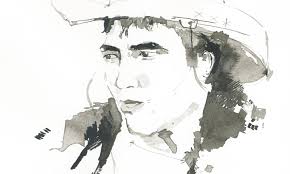The New York Times / Opinion
 2,300 Miles to Work
2,300 Miles to Work
By Tim Brown
An illustrator captures one of the world’s largest migrations.
Credit George Butler
As our world grows increasingly fast-paced, it can be hard to find the time to stop, observe and record the changes happening around us. Trying to do just that, I teamed up to make this documentary film with the “reportage illustrator” George Butler, who has made it his work to depict some of the most important stories of our time through drawings.
Fusing the intimacy of pen and ink with the vérité of cinema, we have created a work that tells a story that would be impossible to convey through either medium alone. In the past, we worked in places as remote and volatile as conflict zones in Afghanistan. With this film we wanted to create an intimate depiction of another phenomenon: contemporary migration, as people travel in search of money, opportunity and safety.
The themes of this story extend far beyond Tajikistan. Migration is happening in increasing numbers worldwide, and it involves far more stories than the disastrous ones we see on our front pages. We felt these equally powerful stories were represented well by Abdullo, a young Tajik who was on his fourth journey to Russia — traveling by rail from Dushanbe to Moscow on a 2,300-mile, four-day journey, undertaken because of the possibility of work. As Abdullo decides to leave once more, his best friend, Oyat, chooses to stay behind.
For migrants like Abdullo, travel is about the destination, not the journey — but the journey is arduous. Filming and drawing along this journey reveals subtleties of thought, moments of speculation about what was and what will come, vulnerabilities captured in motion. In slowing down the time of transit, this film captures the relationship between artist and subject, exposing the sensitivity needed to address the vulnerable issues surrounding migration.
Op-Docs is a forum for short, opinionated documentaries, produced with creative latitude by independent filmmakers and artists. Learn more about Op-Docs and how to submit to the series.
Follow The New York Times Opinion section on Facebook and Twitter (@NYTopinion), and sign up for the Op-Docs newsletter.

